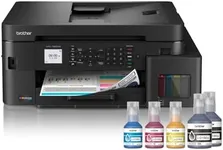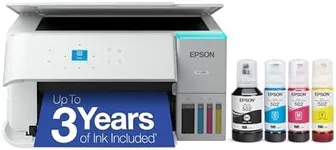Buying Guide for the Best Printers With Refillable Ink
When choosing a printer with refillable ink, it's important to consider several key specifications to ensure you get a model that fits your needs. Refillable ink printers are a great choice for those who print frequently, as they offer lower running costs and are more environmentally friendly. Here are the key specs you should look at and how to navigate them to find the best printer for you.Print Quality (Resolution)Print quality, measured in dots per inch (DPI), determines how sharp and detailed your printed documents and images will be. Higher DPI values mean better print quality. For general document printing, a resolution of 600 x 600 DPI is usually sufficient. If you need to print high-quality photos or detailed graphics, look for a printer with at least 1200 x 1200 DPI. Consider your primary use: if you mostly print text documents, a lower DPI will suffice, but for photo printing, opt for higher DPI.
Print SpeedPrint speed, measured in pages per minute (PPM), indicates how quickly a printer can produce documents. This is important if you need to print large volumes of documents regularly. Printers with speeds of 20-30 PPM are suitable for home or small office use. For higher volume needs, look for printers with speeds above 30 PPM. Assess your typical printing volume to determine the right speed for you; if you print occasionally, a lower PPM is acceptable, but for frequent, high-volume printing, a higher PPM is beneficial.
Ink Tank CapacityInk tank capacity refers to how much ink the printer can hold, which affects how often you'll need to refill it. Larger tanks mean fewer refills and less maintenance. For home use or small offices, a printer with a moderate tank capacity is usually sufficient. For businesses or heavy users, look for printers with larger tanks to minimize downtime. Consider your printing habits: if you print a lot, a larger tank will be more convenient and cost-effective in the long run.
Connectivity OptionsConnectivity options determine how you can connect your printer to your devices. Common options include USB, Wi-Fi, and Ethernet. Wi-Fi connectivity allows for wireless printing from multiple devices, which is convenient for home and office use. Ethernet is useful for wired network connections in larger offices. USB is a straightforward option for direct connections to a single computer. Think about your setup and how you prefer to print: if you need flexibility and convenience, opt for a printer with Wi-Fi capabilities.
Paper HandlingPaper handling refers to the types and sizes of paper a printer can accommodate, as well as its paper tray capacity. If you print on various paper sizes or types (e.g., envelopes, photo paper), ensure the printer supports them. A larger paper tray capacity means fewer interruptions to reload paper. For general home use, a standard tray capacity of 100-150 sheets is usually enough. For office use, especially if printing large volumes, look for a printer with a higher capacity tray. Consider your typical printing tasks to choose the right paper handling features.
Duplex PrintingDuplex printing allows a printer to print on both sides of a sheet of paper automatically. This feature is important for saving paper and reducing printing costs. It's particularly useful for printing reports, booklets, and double-sided documents. If you frequently print double-sided documents, look for a printer with automatic duplex printing. For occasional use, manual duplex printing (where you manually flip the paper) might be sufficient. Assess how often you need double-sided prints to decide if this feature is essential for you.
Maintenance and Ease of UseMaintenance and ease of use refer to how simple it is to operate and maintain the printer. Features like easy-to-refill ink tanks, user-friendly interfaces, and clear instructions can make a big difference. Look for printers with straightforward maintenance procedures and intuitive controls. If you're not tech-savvy, prioritize models known for their ease of use. Consider how much time and effort you're willing to invest in maintaining your printer to ensure it remains in good working condition.
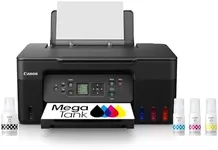
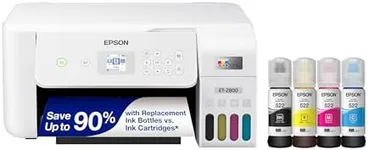
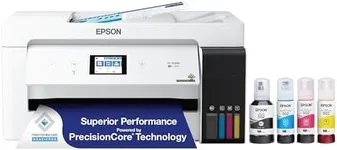
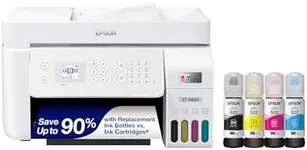
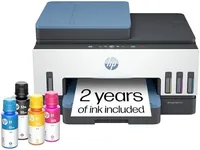
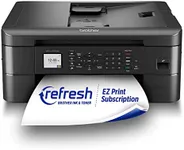

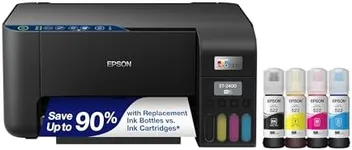


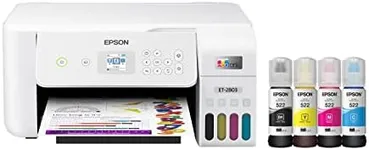
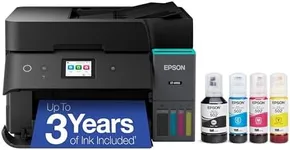
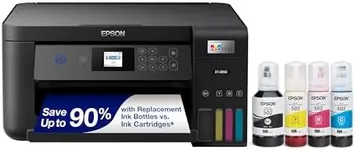
![Canon PIXMA G620 Wireless MegaTank Photo All-in-One Printer [Print, Copy, Scan], Black,Works with Alexa](https://images-proxy.bestreviews.guide/xDO8Tqzej3_mSMcWt-XTCtOR8x4=/0x150/https://m.media-amazon.com/images/I/31W+8GDKNLL._AC_CX679_.jpg)
